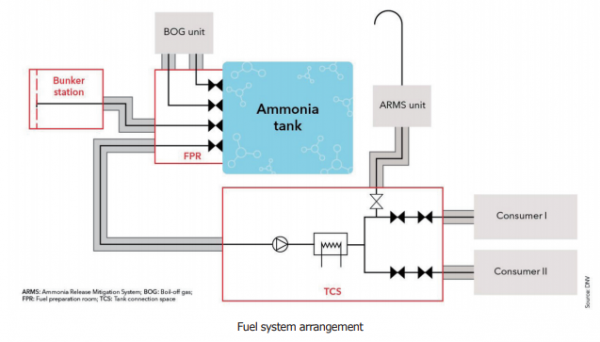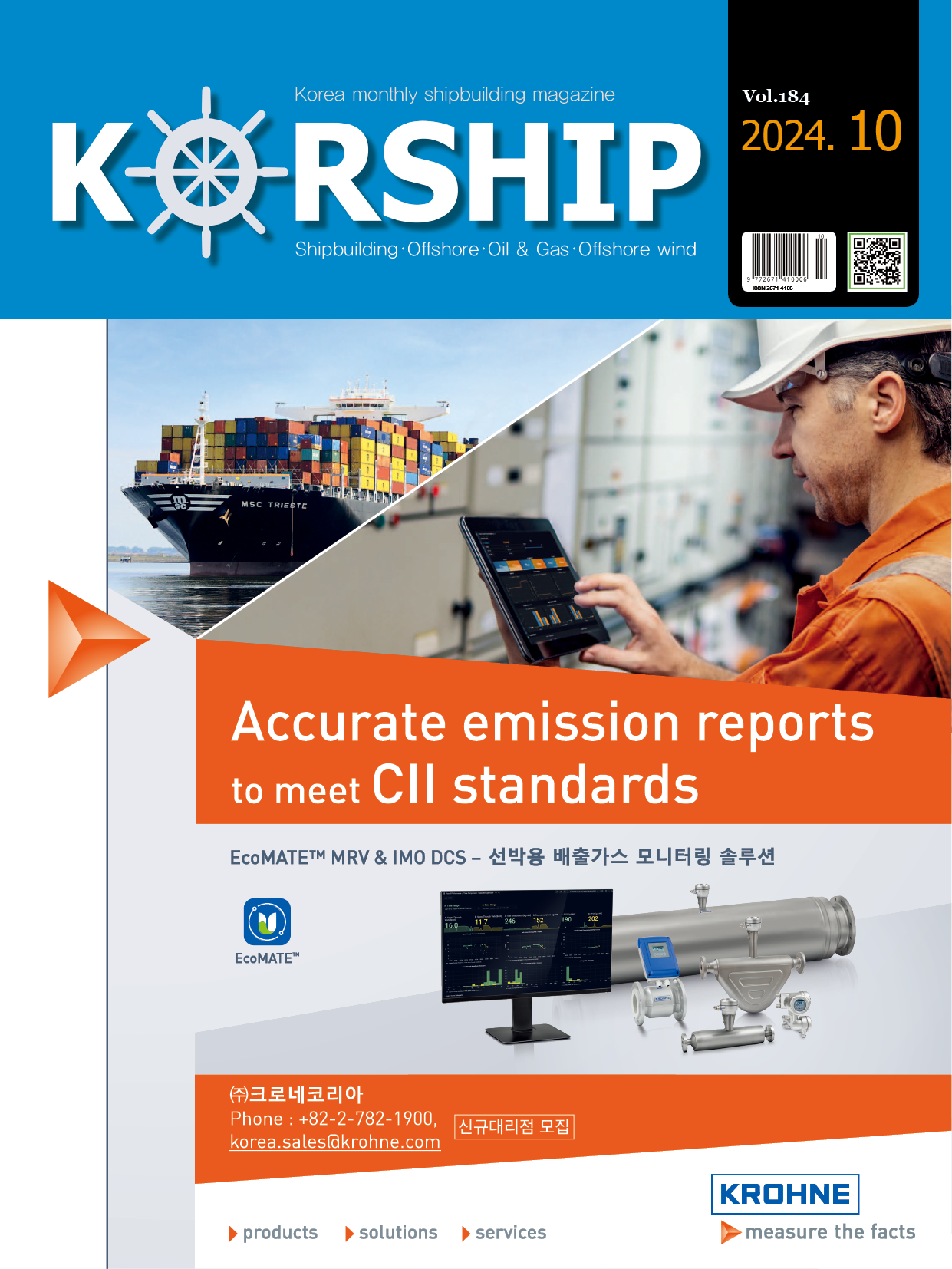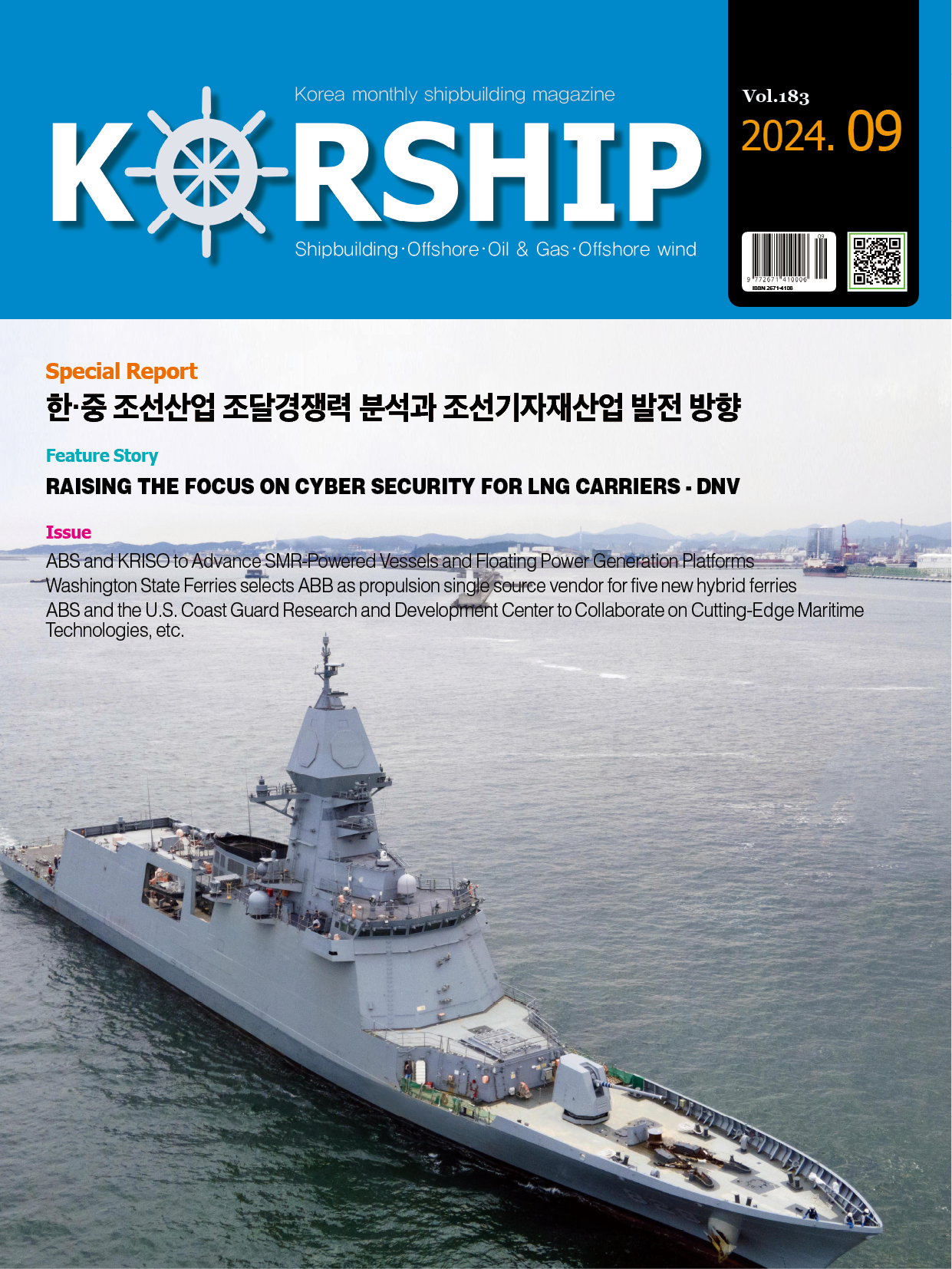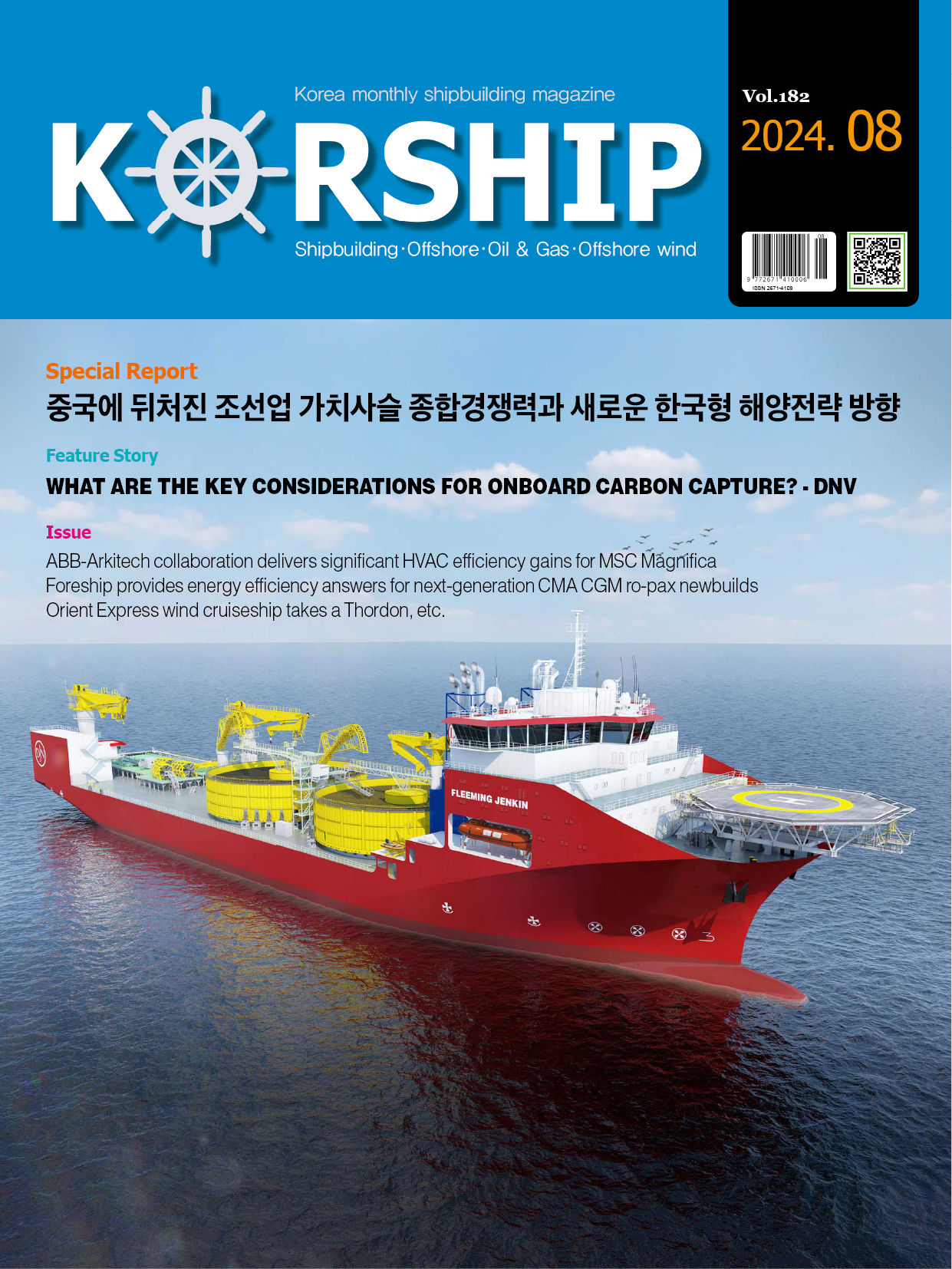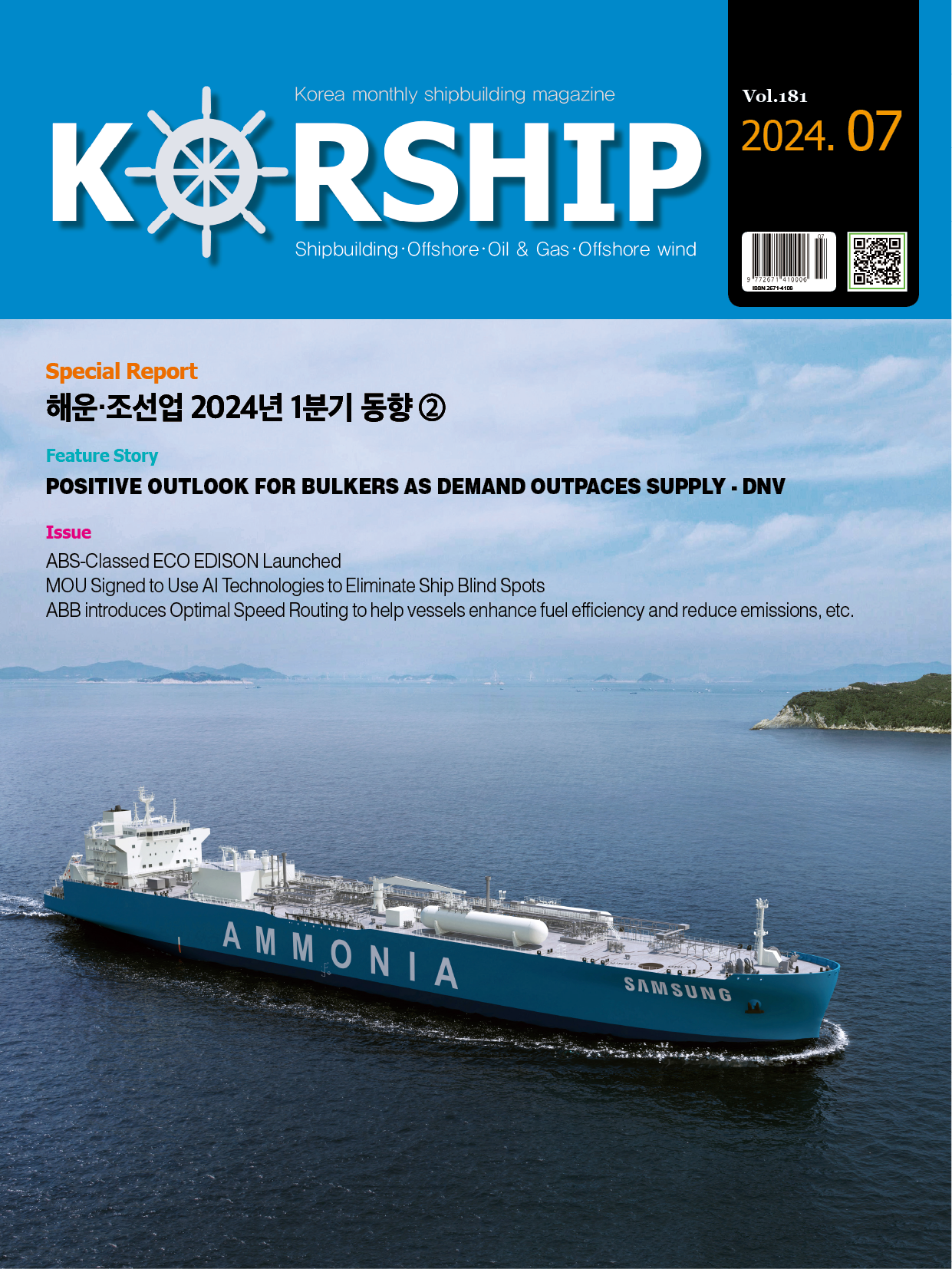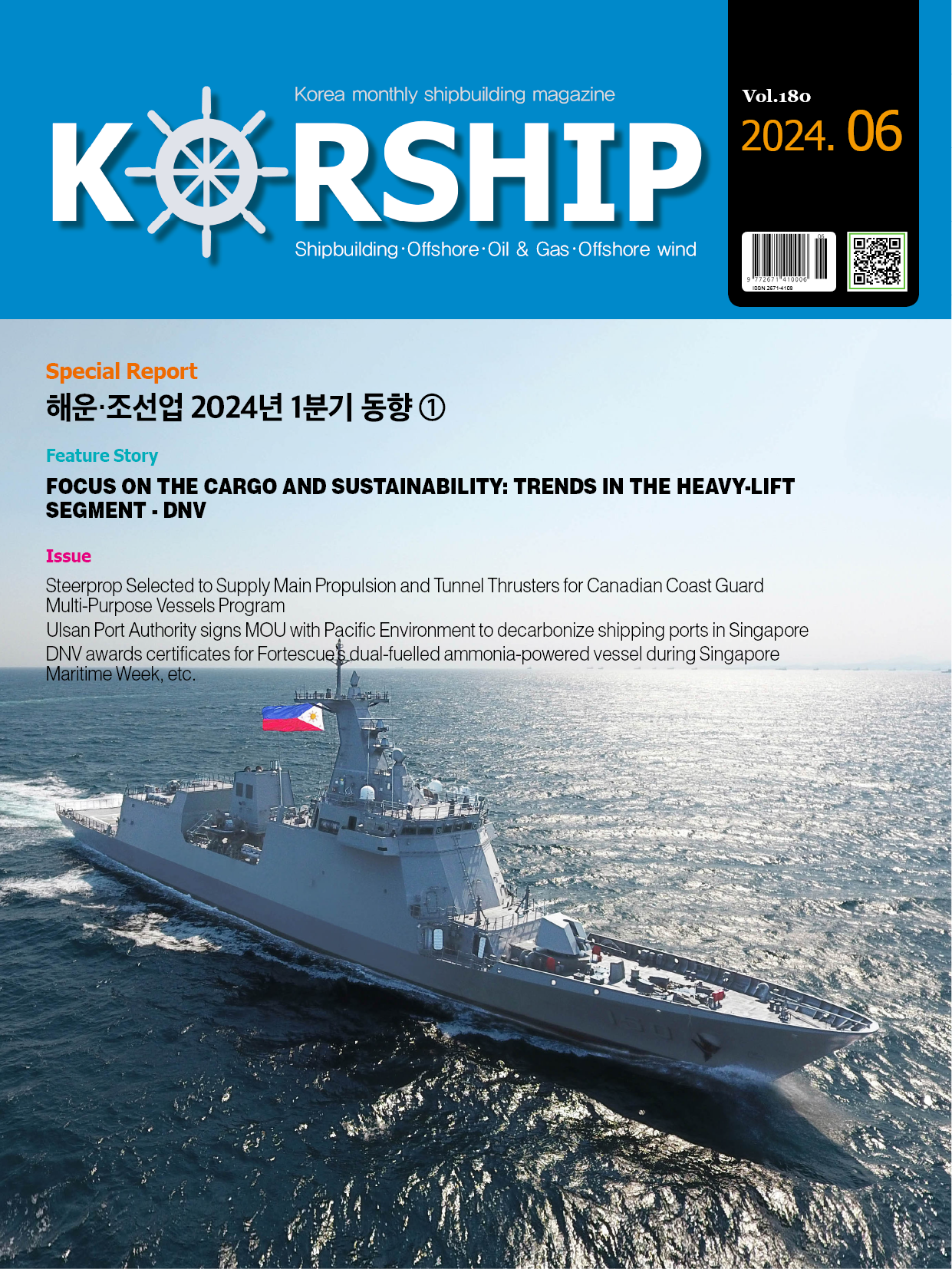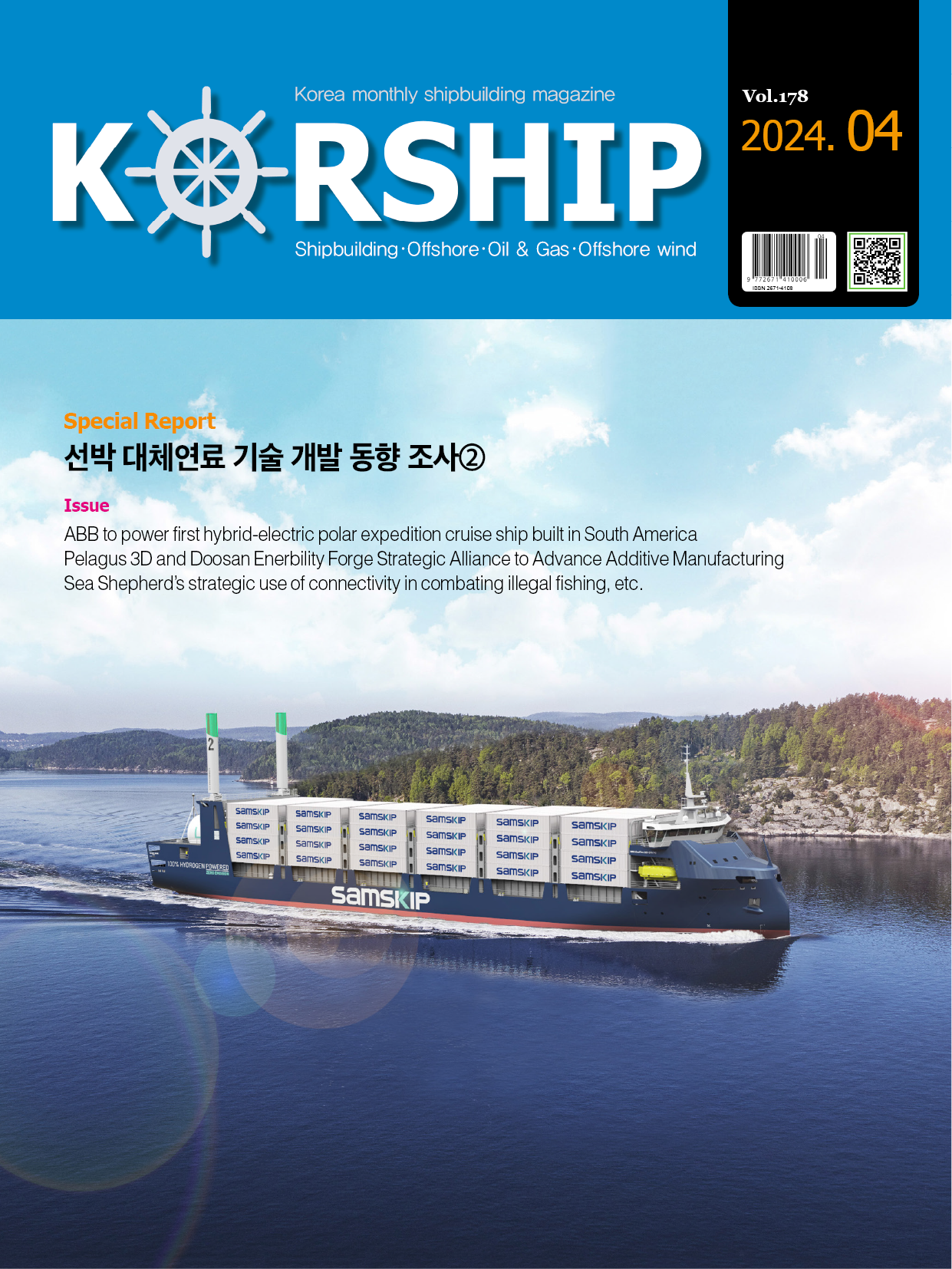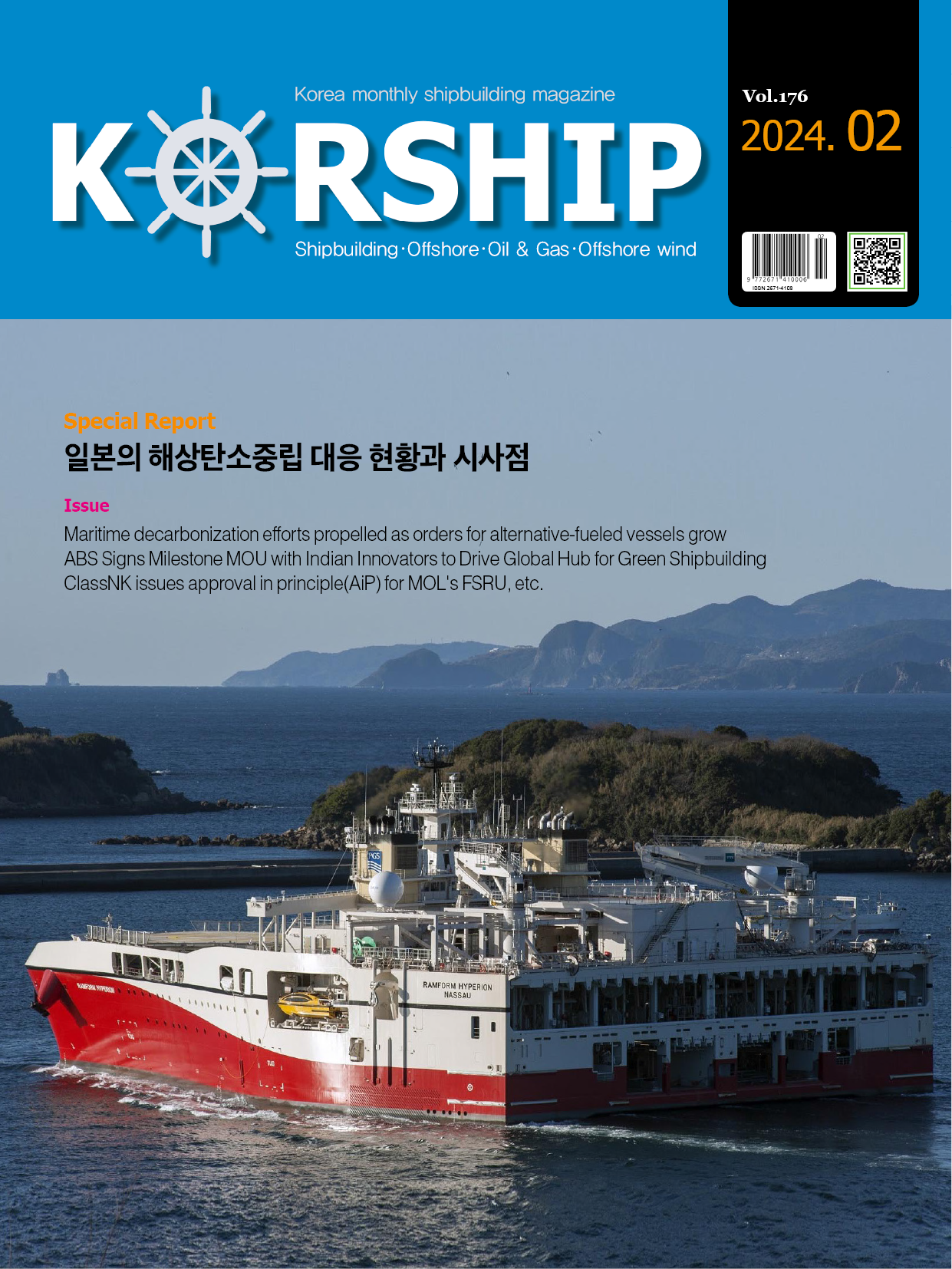Feature Story New ammonia chapter for technical and operational decision support
페이지 정보
작성자 최고관리자 댓글 0건 조회 1,252회 작성일 24-03-15 11:36본문
In the order books of major shipyards, it is evident that the container shipping industry has already embarked on the path towards sustainability, increasingly embracing green technologies and fuels. “In the current year, all new containerships with a capacity of over 5,000 TEU have been ordered with alternative propulsion systems,” says Jan-Olaf Probst, Business Director Containerships at DNV.
DNV’s guidance paper Alternative Fuels for Containerships has recently been complemented by a new chapter discussing ammonia. “The aim of the guidance paper is to offer shipowners a decision framework for numerous alternative fuels currently under discussion, testing and research,” Probst explains. “Decision makers pondering the most feasible propulsion options for newbuilding programmes or retrofitting projects will find valuable, neutral, fact-based information covering the relevant design, engineering and safety criteria to bear in mind.”
Ammonia: A versatile industrial product and promising hydrogen carrier
Ammonia(NH3) is an important industrial product and a commonly traded commodity, typically transported in liquefied form at −33°C and atmospheric pressure. Primarily used to make fertilizers and pharmaceuticals or as a refrigerant, it is also considered a key future storage and long-distance transport medium for hydrogen. While the liquefaction, storage and transport of pure hydrogen requires enormous energy input and is technically complex, handling ammonia is comparatively simple and established industrial practice. Furthermore, the energy density of liquefied ammonia is higher than that of liquefied hydrogen, making its transport more efficient.
Green ammonia: Revolutionizing decarbonization in shipping's energy mix
“Since ammonia combustion emits no carbon compounds, green ammonia is a strong candidate as an alternative, climate-neutral fuel in the energy mix of a future decarbonized shipping fleet,” says Benjamin Scholz, Expert for Alternative Fuel Systems at DNV. “Once production capacities have been scaled up, green ammonia produced using hydrogen from seawater hydrolysis and renewable energy is expected to play a major role in decarbonizing shipping.”
Ammonia can power diesel-cycle two-stroke engines or Otto-cycle four-stroke engines. Due to its poor ignition properties, ammonia requires a pilot fuel, typically diesel or biodiesel. Ammonia-ready dual-fuel ship engines have been introduced recently or are being developed by major manufacturers. Ammonia may also be used in fuel cells.
Managing corrosion and storage challenges: Choosing the right tanks for ammonia in ship design
The corrosive nature of ammonia makes certain steel alloys susceptible to stress corrosion cracking. Careful selection of the tank, piping and equipment material is therefore crucial. The available tank types vary in terms of space utilization, temperature and pressure tolerance, safety barriers as well as design and manufacturing complexity.
Because of its lower energy density, ammonia has a significantly shorter sailing range per unit of volume than both HFO and LNG. Depending on the fuel containment solution chosen, ammonia tanks may be up to four times larger than tanks for an equivalent amount of HFO with the same energy content. Unlike LNG, however, ammonia does not require storage at cryogenic temperatures. On larger ship types, the increased space needed for fuel storage may not be of grave concern.
IMO Type A, B, C and membrane tanks made of suitable materials may be used. The alternative fuels guidance paper elaborates on the advantages and disadvantages as well as the ship design requirements associated with each tank type.
Environmental and safety considerations for ammonia as fuel
Ammonia is a colourless, caustic, highly toxic and therefore hazardous gas. “As a flammable fuel it is subject to the IGF Code and requires specific bunkering equipment on board that minimizes ammonia leakage, as well as designated safety zones and special crew training as detailed in the STCW Code(Seafarers’ Training, Certification and Watchkeeping),” Scholz points out. Fuel tank and piping arrangements must follow the principles of segregation, double barriers including thermal insulation, and leakage detection. Furthermore, liquefied ammonia requires boil-off gas management. The necessary on-board safety systems and arrangements are explored in detail in the guidance paper.
The combustion of ammonia is carbon-free but releases nitrogen oxides. Since N2O, or laughing gas, is a powerful greenhouse gas, ammonia-burning ship engines must include N2O management, for example through selective catalytic combustion(SCR) systems.
Ammonia has attracted the shipping industry’s attention as a potential
zero-carbon fuel, especially when produced as green ammonia.
In a new chapter added to its Alternative Fuels for Containerships guidance paper,
DNV explores the properties, requirements and implications for ship design.
DNV class rules for ammonia
DNV has issued classification rule updates relating to ammonia that took effect in January 2022 and January 2023. Two new class notations were introduced that are relevant for ammonia as ship fuel. “The Fuel Ready class notation provides shipowners with the option to prepare their newbuilds for later conversion to multiple different alternative fuel options, including ammonia, LNG, LPG and methanol,” Scholz explains. “It comes with several qualifiers specifying mandatory basic as well as optional levels of preparation, relating to structural aspects, engine and machinery, piping and bunkering, and miscellaneous other requirements.”
Furthermore, the Gas Fuelled Ammonia class notation gives owners the option to start building ships for future ammonia propulsion today, setting out the requirements for the ship’s fuel system, fuel bunkering connection and piping through to the fuel consumers. “Through both of these class notations DNV provides a practical path for owners to implement a zero-carbon fuel option for their newbuilds,” says Scholz.
Bunkering options for ammonia
Ammonia may be bunkered ship-to-ship, truck-to-ship or terminal-to-ship. Each method has its advantages and disadvantages. “The ship-to-ship concept is most flexible, being independent of port infrastructure; bunkering from a terminal or jetty at a safe distance from other port installations allows the highest bunkering rates,” Scholz elucidates. Truck-to-ship bunkering is essentially possible anywhere but suitable for smaller amounts of ammonia only. Various ports around the world are currently developing or planning to build ammonia bunkering infrastructure. Both ship-to-ship and terminal-to-ship bunkering will typically be designed to transfer refrigerated, liquefied ammonia.

Minimizing future retrofitting capex
Ammonia is clearly a realistic decarbonization option. “Owners contemplating a future ammonia retrofit of a ship being built today are well advised to choose a design with a high degree of ammonia-readiness along the relevant DNV class notations to minimize future retrofitting capex,” Probst advises.
The CO2-equivalent emissions of an ammonia-ready vessel, maximizing ammonia use after the retrofit, will be significantly lower than those of a vessel gradually increasing the share of biocarbon-based fuels to align with the decarbonization trajectory because, unlike ammonia, biofuels emit CO2.
Prices for green ammonia will be key decision factor
The technology for green and blue ammonia exists, but current production volumes are very small. As with all low- or zero-carbon fuels, the availability of sufficient amounts of green ammonia at an affordable price will be a decisive factor for the uptake. Producing green ammonia requires a sufficient supply of green energy while blue ammonia depends on carbon capture and storage capabilities. Blue ammonia could become a feasible transitional fuel with low well-to-wake emissions.
■ Source: DNV www.dnv.com

